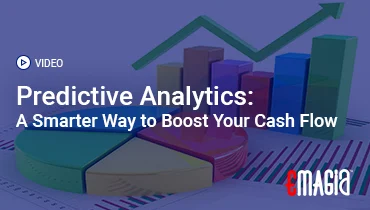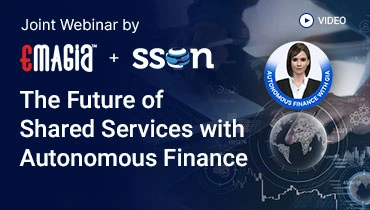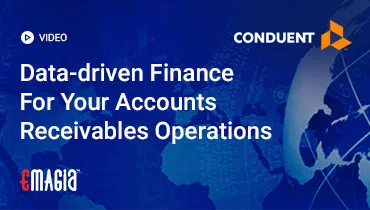In a business world defined by constant change and uncertainty, managing risk is no longer about reacting to problems after they occur. The traditional, reactive approach, where an organization only responds to a materialized risk, is simply too slow and costly. We are witnessing a profound shift in how enterprises anticipate and mitigate potential threats, driven by the power of data and advanced analytics. This transition from a defensive stance to a proactive, forward-looking strategy is at the heart of the predictive analytics revolution.
Predictive analytics for risk is about using data to tell a story about the future. By analyzing historical information, statistical algorithms, and machine learning techniques, businesses can uncover hidden patterns and forecast the likelihood of future outcomes. This capability empowers leaders to make more informed decisions, allocate resources more effectively, and build a more resilient organization. It’s the difference between navigating a storm with a real-time weather forecast versus sailing blindly into it.
The Core Mechanics of Predictive Risk Models
At its core, predictive analytics for risk relies on a blend of data science, statistics, and domain expertise. It’s not just a single tool but a sophisticated process that involves collecting and preparing data, building and training models, and deploying them to provide actionable insights. Understanding these foundational components is key to appreciating the power of this technology.
Foundational Techniques: Regression, Decision Trees, and Neural Networks
The models used in predictive risk management can be simple or incredibly complex. Regression analysis, for instance, is used to model the relationship between variables, helping to forecast how one factor might influence another. Decision trees offer a clear, visual representation of choices and potential outcomes, making them ideal for understanding individual-level decisions. For highly complex, non-linear relationships, neural networks and deep learning models are the powerhouse engines that can uncover subtle patterns that human analysts would never find. These techniques are often combined to create robust and highly accurate predictive systems.
The Importance of Big Data and Real-Time Analytics
Effective predictive analytics thrives on data. The ability to collect, process, and analyze vast, diverse datasets from both internal and external sources is paramount. This includes traditional data like financial statements and credit reports, as well as alternative data sources such as social media activity, utility payments, and behavioral data. Furthermore, the capacity for real-time analytics allows for instant risk assessments, which is critical in dynamic fields like fraud detection and cybersecurity.
Key Applications Across Industries
Predictive analytics for risk is not confined to a single sector. Its principles can be applied universally to help organizations in various industries mitigate threats and capitalize on opportunities. The applications are as diverse as the risks themselves, offering a proactive shield against potential losses.
Financial Services: Revolutionizing Credit and Fraud Risk
The financial sector was one of the earliest and most impactful adopters of predictive analytics. Banks and lenders now use predictive models to move beyond traditional, static credit scores. By incorporating thousands of data points, including non-traditional ones, they can create a more nuanced picture of a borrower’s creditworthiness. This leads to a more accurate prediction of loan defaults and allows for a significant reduction in loan losses.
In the fight against financial crime, predictive fraud detection systems are now the front line of defense. Unlike older, rule-based systems that could only flag known fraud patterns, modern AI-powered systems can analyze transactions in real time to spot anomalies that signal new and emerging fraudulent tactics. This proactive approach allows institutions to block suspicious transactions before they are completed, saving millions in potential losses and protecting customer trust.
Insurance and Healthcare: From Claims to Patient Risk
In the insurance industry, predictive analytics is used to price policies more accurately, identify fraudulent claims, and predict customer churn. By analyzing historical claims data and customer behavior, insurers can identify patterns that indicate a higher risk of fraud or a higher likelihood of a claim. In healthcare, predictive models are used to identify patients at risk of chronic diseases, allowing providers to intervene with preventative care and improve patient outcomes while also reducing costs.
Supply Chain and Operations: Predicting Disruptions and Failures
Supply chains are inherently vulnerable to disruptions. Predictive analytics for risk helps businesses anticipate these issues by analyzing data from logistics, weather patterns, and geopolitical events. This foresight enables companies to proactively reroute shipments, adjust inventory levels, and mitigate the impact of unforeseen events. Similarly, in manufacturing, predictive maintenance models can analyze sensor data from machinery to forecast when equipment is likely to fail, allowing for maintenance to be scheduled before a costly breakdown occurs.
Major Hurdles and How to Overcome Them
While the benefits of predictive analytics are clear, the path to implementation is not without its challenges. Organizations that fail to prepare for these hurdles often find their projects stalled or, worse, yielding unreliable results.
The Challenge of Data Quality and Integration
The old adage “garbage in, garbage out” is especially true for predictive models. Data from multiple sources is often messy, inconsistent, and incomplete. A significant portion of a predictive analytics project is dedicated to data cleaning, validation, and integration. Without a robust data governance strategy and the right tools to create a unified data model, even the most sophisticated algorithms will produce flawed predictions.
Addressing the Talent and Skills Gap
Developing, deploying, and maintaining predictive models requires a specialized set of skills in data science, machine learning, and business domain knowledge. The demand for this talent often outstrips the supply, making it a competitive and expensive endeavor. Organizations can overcome this by investing in training for existing employees or by partnering with technology vendors that offer user-friendly, low-code platforms that democratize access to powerful predictive tools.
Ethical and Regulatory Considerations
The use of predictive analytics also raises important ethical questions about data privacy, bias, and transparency. Models trained on biased historical data can perpetuate and even amplify societal biases in decisions about credit, employment, or insurance. Organizations must be vigilant in validating the fairness of their models and ensuring compliance with regulations like GDPR. Transparency in how models make predictions is becoming increasingly important, especially for “black box” algorithms like neural networks.
How Emagia Helps Businesses Leverage Predictive Analytics for Risk
For many businesses, the complexity of building and maintaining a custom predictive analytics system is a significant barrier to entry. This is where a specialized technology partner can make a world of difference. Emagia offers a unique solution that embeds sophisticated predictive analytics directly into the critical Order-to-Cash (O2C) process, enabling companies to proactively manage financial risk.
Emagia’s AI-powered platform provides a comprehensive suite of tools for credit risk management. It goes beyond simple credit scoring by using advanced machine learning models to analyze a wide array of data points—both internal (past payment history, DSO) and external (global credit bureau data). This holistic view enables businesses to make faster, more accurate credit decisions when onboarding new customers and to continuously monitor the risk profile of their existing accounts. Emagia’s platform can automatically adjust credit limits and issue early warning alerts when a customer’s risk profile changes, helping to proactively prevent bad debt and reduce financial exposure without the need for manual review.
FAQs – The Future of Predictive Analytics for Risk
What is the difference between predictive and prescriptive analytics?
Predictive analytics forecasts what might happen next based on historical data. Prescriptive analytics goes a step further by not only predicting an outcome but also recommending specific actions to take to achieve a desired result or mitigate a risk.
How is predictive analytics used in fraud detection?
Predictive analytics for fraud detection uses machine learning to analyze transaction data in real time, looking for patterns and anomalies that indicate fraudulent activity. It can flag or block suspicious transactions instantly, moving from a reactive to a proactive defense against financial crime.
What are the main types of data used in predictive risk models?
Predictive models use a wide range of data, including historical financial data, customer transaction records, market trends, social media activity, and other behavioral or demographic information. The quality and diversity of the data are crucial for model accuracy.
Is predictive analytics only for large corporations?
No. While large corporations have traditionally led in this area, the democratization of predictive analytics through cloud-based, software-as-a-service (SaaS) solutions has made this technology accessible to businesses of all sizes, allowing them to gain a competitive edge in risk management.
What skills are needed to work with predictive analytics for risk?
A blend of skills is required, including strong analytical and statistical knowledge, proficiency in data science tools, and a deep understanding of the business domain. As technology advances, human skills like critical thinking, problem-solving, and communication are becoming even more valuable.



